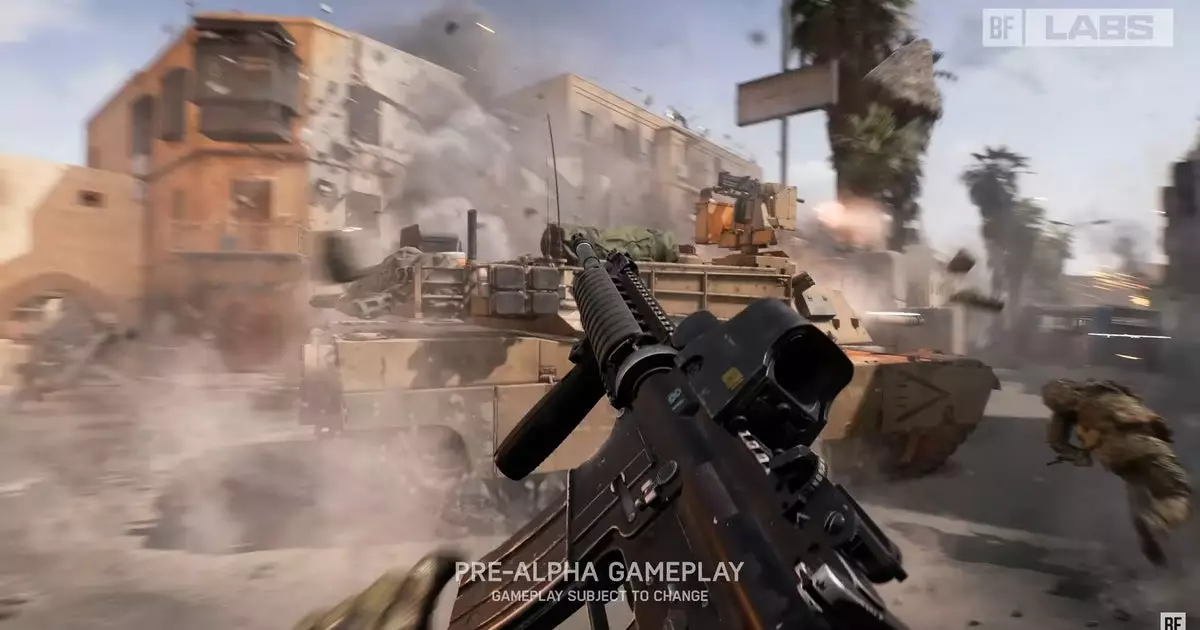As the gaming community eagerly anticipates the next installment of the Battlefield franchise, recently released promotional material raises more questions than answers about the game’s innovative features. The video reveals the chaotic yet familiar essence of what gamers have come to expect from Battlefield—collapsing structures, intense gunfire, and vehicles dominating the environment. An explosive clip from the game’s demo shows a battlefield rife with destruction, and indeed, the visuals evoke a satisfying sense of chaotic warfare. However, this raises a critical question: how much has actually changed, or is this merely another opportunity to blast things with greater intensity?
Much of the promotional material centers around producers discussing their ambition to “level up” the core experience, suggesting that players can expect a familiar gameplay style while promising enhancements. Yet, the term “core experience” might actually indicate a reluctance to stray too far from Battlefield’s established formula. From what we see, the game features the same mechanics that have characterized the series for over a decade: airstrikes, grenade launches, and the inevitable chaos of tank warfare. Even the “exciting news” about a single-player campaign, set in a modern or near-future context, feels like a reiteration rather than a revolution. This begs the question of whether inclusivity in gameplay modes signifies true advancement or merely the retention of standard offerings.
The introduction of “Battlefield Labs,” where select players can participate in testing the game, appears to be an intriguing initiative that invites community engagement. Nonetheless, this initiative carries with it the familiar corporate tactic of soliciting feedback while highlighting the lack of transparency inherent in such playtesting. Essentially, it seems to be a polished way of getting individuals to sign non-disclosure agreements without offering them any genuine agency in the game’s development process. While player testing can yield valuable insights, one has to wonder about its effectiveness when there could be significant limitations on what feedback is truly actionable.
The promotional piece emphasizes a collaborative effort from four different studios: Dice, Criterion, Motive, and Ripple Effect. Despite their unified front, this alliance raises suspicions due to the already acknowledged postponement of Criterion’s work on upcoming racing titles. The closure of Ridgeline Games, which was initially contributing to the project, is another red flag that questions the stability and direction of the game’s development. Such shifts highlight ongoing instability within EA’s studio hierarchy, suggesting that this venture may be struggling against internal pressures rather than moving toward a cohesive vision.
As the countdown to Battlefield 6 continues, prospective players are left to ponder whether the new title signifies a bold stride into innovative territory or if it is simply a refined version of past installments. While the loud visuals and ambitious messaging are undeniably captivating, one must consider whether these elements mask a deeper issue of stagnation within one of gaming’s oldest franchises. Only time will reveal whether Battlefield 6 will captivate the hearts of gamers or merely act as a nostalgic shout to a bygone era of first-person shooters.

